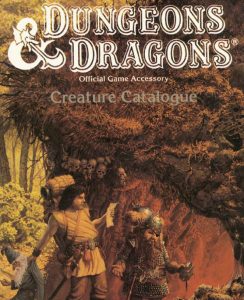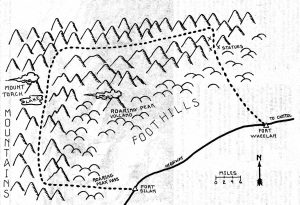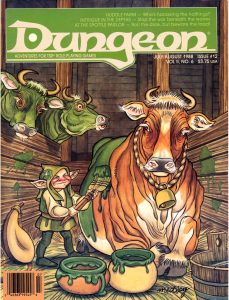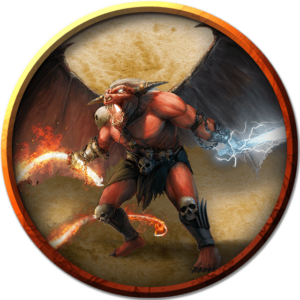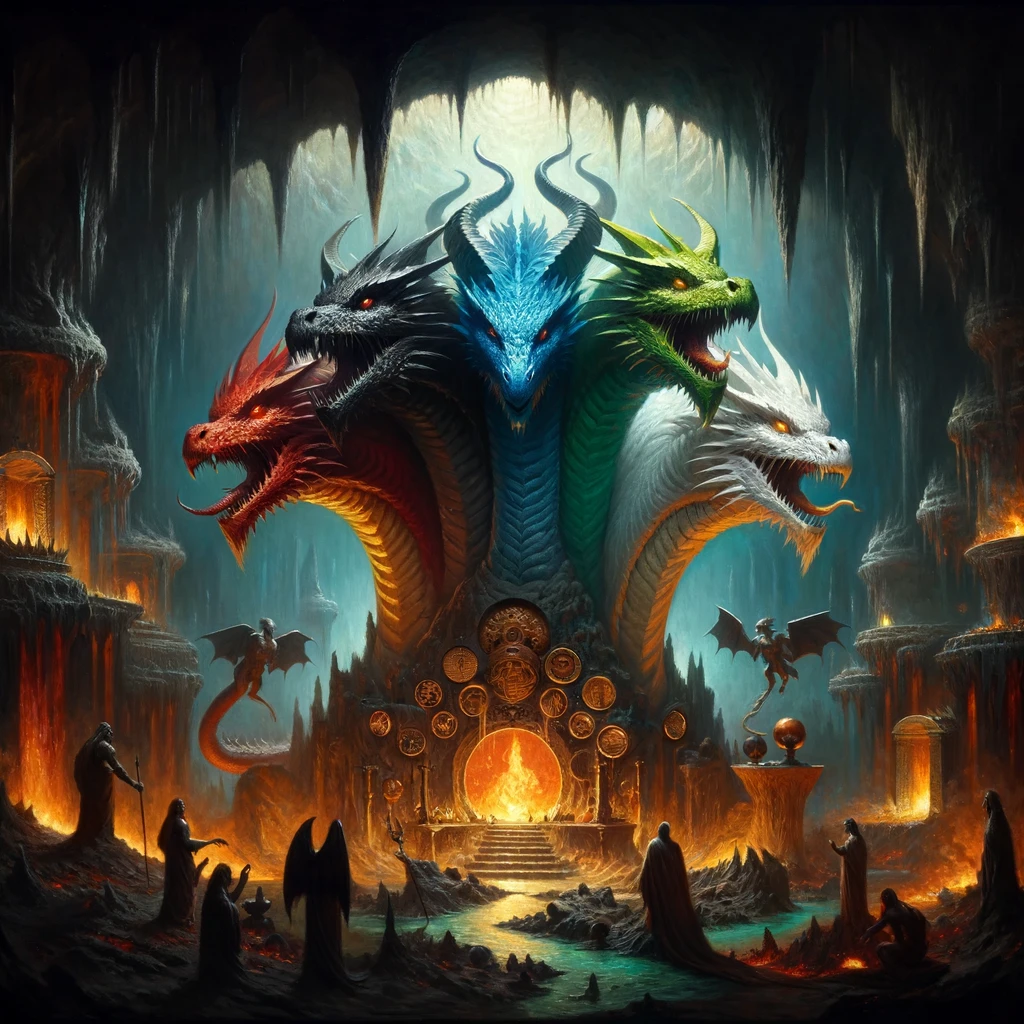
Prelude to Power: Tiamat in the Early Years
The dragon goddess Tiamat, embodying the very essence of draconic avarice and wrath, has been a pillar of the Dungeons & Dragons (D&D) universe since its inception. Her debut in the original 1974 edition marked the beginning of an era that would see her evolve from a mere monster to a complex deity with her own mythology, worshipers, and cosmic agenda.
Initially depicted as a powerful five-headed dragon, each head a different color representing the classic chromatic dragons (black, blue, green, red, and white), Tiamat's early portrayal was rooted in her role as a formidable adversary for players. Her domain in the Nine Hells hinted at her infernal nature and provided a rich backdrop for epic campaigns. In these formative years, Tiamat was a straightforward embodiment of chaos and destruction, a direct challenge for any party daring enough to face her.
Tiamat's narrative prominence increased as D&D editions evolved, reflecting the growing sophistication of the game's lore and mechanics. Her transformation into a deity brought with it a new dimension of narrative depth, where her motivations and schemes became as intricate as the layers of the Nine Hells she inhabited. Writers and game designers wove her presence into the fabric of major campaign settings, where she often served as the puppeteer of large-scale conflicts and the master of dark, draconic machinations. Her ability to manipulate, control, and dominate dragons and their kin made her a central figure in the power dynamics of D&D's multiverse, presenting her not only as a tyrant of dragons but also as a divine force of malevolence challenging the gods themselves.
Furthermore, the cults devoted to Tiamat added a layer of terrestrial influence to her celestial tyranny. These cults, comprised of not only dragons but also various humanoid races, carried out her will with zealot-like fervor, performing dark rituals to increase her power and spread her dominion across the planes. Through these followers, Tiamat's presence was felt in the everyday lives of the common folk, marking territories with her symbol and spreading fear and paranoia. As a deity, Tiamat became a symbol of ultimate ambition and corruption, her every move a calculated step towards greater power and chaos, setting the stage for epic storytelling where heroes are forged in the fires of conflict against a truly formidable foe.
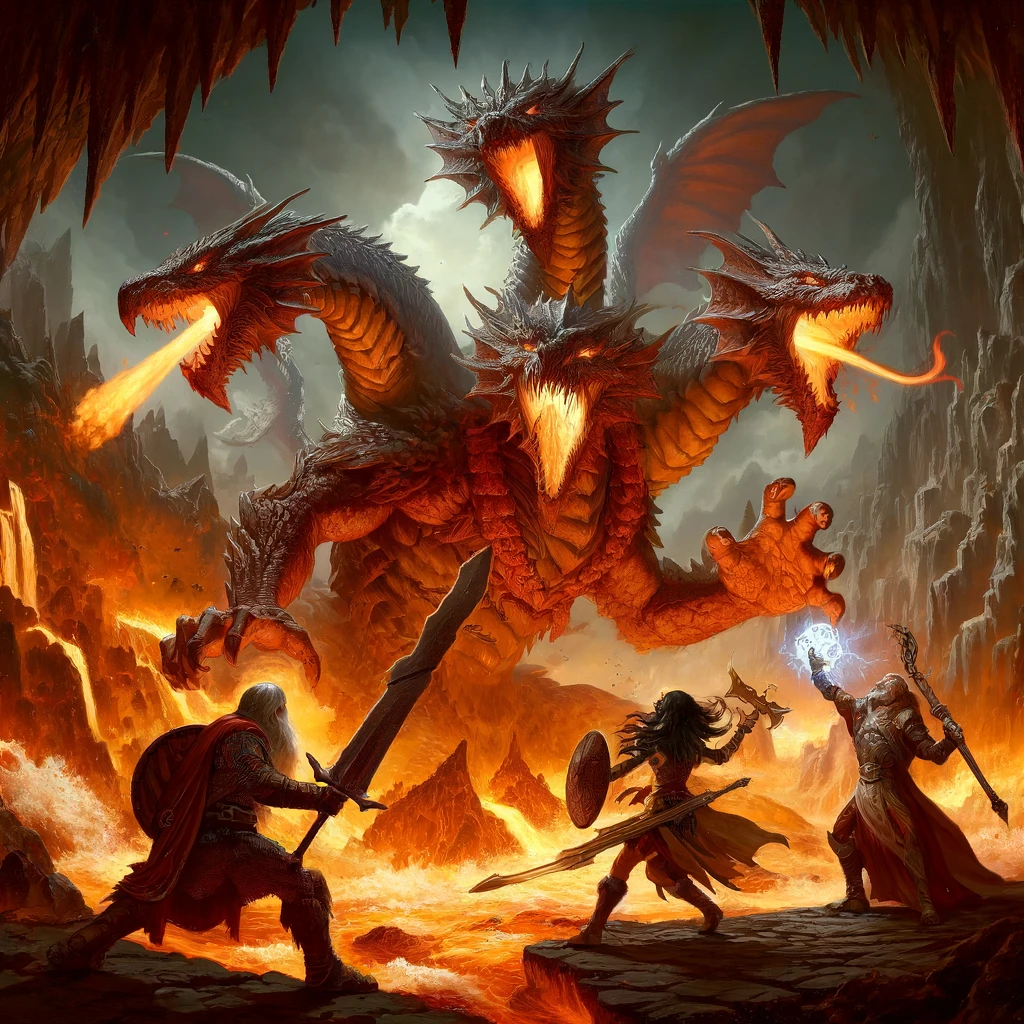
A Goddess Ascends: Advanced Dungeons & Dragons
With the advent of Advanced Dungeons & Dragons (AD&D) in the late 1970s, Tiamat's character was fleshed out further. The Monster Manual and later supplements expanded her background, delving into her dominion over the first layer of the Nine Hells, Avernus. Here, she reigned not merely as a powerful beast but as a cunning goddess overseeing legions of devils and the souls of the damned.
This era also introduced more about her mythology and interactions with other deities, setting a cosmic play of power that influenced the material plane and beyond. Campaign settings like the Dragonlance series began to explore the ramifications of Tiamat's machinations upon the world of Krynn, where her influence was felt across various plotlines and character arcs.
As Tiamat's mythos expanded, so too did her role in the overarching narratives of D&D. Writers began to showcase her not just as a deity of destruction and greed but also as a deity of strategy and survival, weaving her threads across multiple campaigns and settings. Her interactions with other divine beings were portrayed with complexity, often highlighting her intelligence and cunning as she maneuvered through the celestial hierarchies and infernal politics. This depth made her a favorite antagonist in epic storylines, where the stakes involved her gaining more power or preventing the rise of rivals that threatened her dominion.
Moreover, the evolving portrayal of Tiamat embraced themes of corruption and redemption, with numerous tales revolving around fallen heroes or redeemed villains influenced by her power. Such stories added layers to the moral and ethical dilemmas within D&D campaigns, enriching player engagement and narrative depth. Her ability to corrupt mortals and immortals alike emphasized her role as a multifaceted antagonist capable of affecting change both overtly through conquest and subtly through corruption. This dual approach allowed Dungeon Masters to use Tiamat as a behind-the-scenes influencer or as a direct challenger, making her one of the most versatile and enduring villains in the history of the game.
The Rise of Tiamat: Third and Fourth Editions
The third and fourth editions of D&D brought significant changes to Tiamat's portrayal. Not only did her physical and magical abilities expand, but so too did her role within the cosmology of D&D. Draconomicon: The Book of Dragons for 3rd edition and Monster Manual for 4th edition presented her not only as a deity of greed and envy but also highlighted her cunning and strategic acumen in orchestrating plots that spanned the multiverse.
Her followers, from the lowest kobold minions to the highest ranks of dragonkind, were often depicted engaging in complex schemes to increase their goddess's power. The introduction of detailed lore around dragonic prophecies and Tiamat's quest to influence or subvert these prophecies added layers of depth to campaigns, providing a narrative richness that DMs could draw upon to craft intricate, dragon-focused adventures.
The strategic depth that Tiamat's character gained during these editions also reflected in her interactions with other major entities and events within the D&D universe. As her influence spread, the boundaries between planes seemed to thin, with portals and rifts opening at her command, facilitating the dramatic entry of her agents into the material world. This not only brought a palpable sense of danger and urgency to campaigns but also allowed players to engage directly with her machinations, thwarting or unwittingly aiding her plots through their adventures. The engagement with such a powerful antagonist provided memorable gaming experiences, deeply immersing players in a world where their actions could have universe-altering consequences.
Additionally, the narrative potential of Tiamat's cults was greatly enhanced, with her worshipers depicted not just as mere fanatics but as complex characters with their own ambitions and motivations. This era introduced several iconic villains who served under Tiamat's banner, each bringing a unique twist to how they interpreted her will. These characters served as both allies and adversaries to players, further blurring the lines of moral clarity and creating a dynamic, evolving storyline that could adapt to the players' decisions. This approach enriched the role-playing aspects of D&D, allowing for more nuanced and morally ambiguous stories that challenged players to consider the wider ramifications of their actions in a world influenced by a deity like Tiamat.
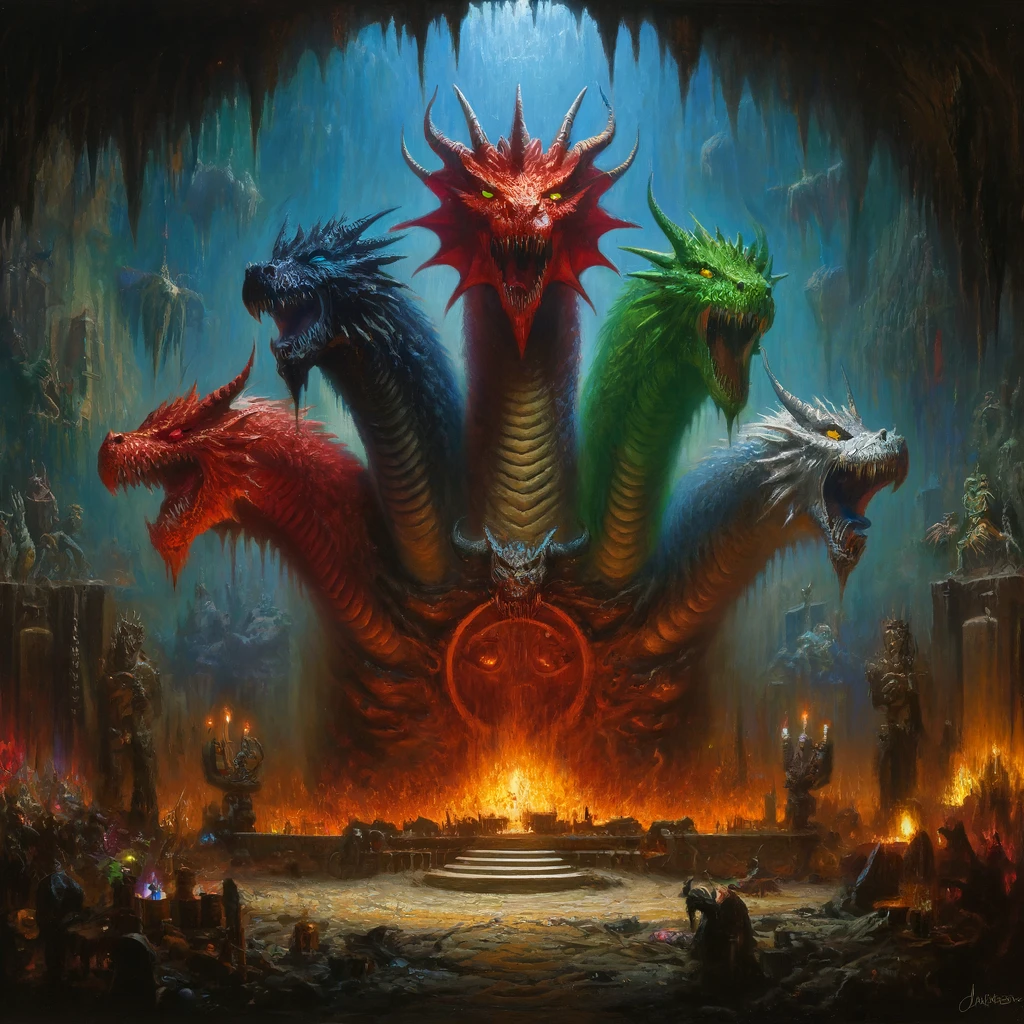
Tiamat Unleashed: Fifth Edition and Beyond
The release of the fifth edition of D&D marked a pivotal moment for Tiamat with the adventure module Hoard of the Dragon Queen and its sequel, The Rise of Tiamat. These campaigns center around the Cult of the Dragon's efforts to bring Tiamat from the Nine Hells to the Forgotten Realms. This plotline not only solidified her status as a primary antagonist capable of threatening entire worlds but also brought her into direct conflict with players in a detailed, campaign-spanning narrative.
These editions emphasized her influence not just as a power in the Nine Hells but as a deity with significant cultic following attempting to alter the balance of power across the planes. The Tiamat of fifth edition is a deity with the nuanced ambition of a dark goddess, looking to extend her reach and power in a multidimensional chess game with the highest stakes.
Legacy of the Dragon Queen
Today, Tiamat remains a symbol of ultimate power and greed, her essence woven into the fabric of D&D. Each edition has built upon the last, crafting a richer portrayal of the Dragon Queen, transforming her from a simple monster to a deity whose influence can be felt across countless worlds and stories. Her evolution mirrors the development of the game itself-from a simple dungeon crawl to complex narratives where the fate of entire universes can hinge on the actions of her and those who oppose or worship her.
This evolution reflects a broader trend in D&D's history: the deepening of its lore and the expansion of its narrative possibilities. As Tiamat has grown in complexity, so too have the stories we tell within this beloved universe. From tabletops to novels and even recent multimedia adaptations, her presence endures as both a challenge and an inspiration, a reminder of the depths of villainy and the heights of heroism that can be explored within the world of Dungeons & Dragons.
Tiamat's legacy as a pivotal figure in D&D is also highlighted by her ability to adapt and thrive within the changing landscape of fantasy gaming. Her roles have expanded beyond the traditional boundaries of antagonist, occasionally being portrayed as a dark anti-hero or a misunderstood force of nature, depending on the narrative needs of the campaign. This versatility has made her a favorite among players and Dungeon Masters alike, who appreciate the depth she brings to the game. Her character challenges players not only in battle but also in their understanding of power and morality, pushing them to make difficult decisions that could affect the balance of the cosmos.
Moreover, Tiamat's influence extends into the community and culture surrounding D&D. She has become a symbol of the creativity and endless possibilities inherent in role-playing, inspiring artwork, fan fiction, and even academic discussions about mythology and game design. Annual conventions, online forums, and social media platforms often feature sessions and discussions dedicated to dissecting her impact on D&D lore and exploring various ways she can be integrated into personal campaigns. As Dungeons & Dragons continues to grow and evolve, Tiamat's role as a beacon of storytelling potential and complex character development remains a testament to her enduring appeal and significance in the fantasy role-playing world.
